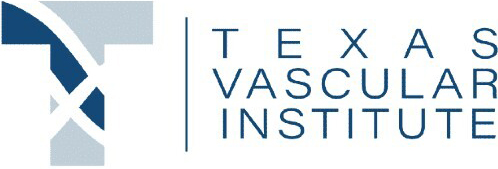By: Dr. Dev Batra | 01.30.23
Vein specialist Dr. Dev Batra explains the differences between laser treatment and sclerotherapy injections for spider veins, and which option is better.
Because Texas Vascular Institute is a full-service vein clinic, we’re often asked why we don’t offer laser treatment. The short answer is that sclerotherapy injections have proven advantages over laser treatment that ultimately benefit our patients. For the long answer, we’ve provided a detailed comparison of the two treatment options.
Laser Treatment
There are a number of different laser treatment devices that are designed specifically for the removal of spider and reticular veins. These devices utilize light energy that’s finely tuned such that it is selectively absorbed by oxyhemoglobin in the blood and converted into thermal energy. When applied to the skin, this intense heat causes rapid coagulation of the blood, injury to the vein, and thrombosis (clotting) of the target vessel.¹
Laser treatment is most effective when veins are small, sparse, and shallow. Typically, laser energy will not be effective on veins that are larger than a 30-gauge needle and cannot treat at depths greater than a few millimeters without damaging surrounding tissue.² These limitations are due to the nature of light itself. In general, lasers that penetrate deeper require more energy to eliminate the target vein, but excess energy can also cause non-selective heating of tissue that surrounds the vein.²

Sclerotherapy Injections
Sclerotherapy (also known as ‘chemical ablation’) injections involve the injection of a sclerosant agent directly into the veins. A sclerosant is a chemical that triggers a series of biological reactions from within the veins causing vein irritation, dehydration, and destruction. Sclerotherapy injections begin to work immediately, so our patients tend to be very excited to see their spider veins fade away as soon as they receive an injection.
In contrast to laser treatment, sclerotherapy injections can be used to treat virtually all sizes of spider and reticular veins. Sclerotherapy also has the ability to treat larger veins that lie further underneath the surface of the skin, making it an important accessory treatment to completely eliminate branches of varicose veins.³
In most cases, spider or reticular veins treated by sclerotherapy require one or two treatment sessions for complete resolution. On the other hand, multiple laser treatment sessions are often necessary for the complete elimination of problem veins (sometimes as many as six!), costing patients time and additional medical expenses. However, laser treatment is particularly useful in rare instances of needle phobia and allergy to sclerosants.¹

The Evidence
Where we can, we like to lean on quality clinical evidence to guide our medical practice. In a study published in the Journal of the European Academy of Dermatology and Venereology, 56 patients with spider and reticular veins on both of their legs received laser treatment on one leg and sclerotherapy injections on the other leg.
Legs treated with sclerotherapy saw faster resolution of their veins and subjects reported significantly less pain in the leg treated by sclerotherapy than in the leg that received laser treatment. Besides temporary hyperpigmentation, which occurred more in legs treated by sclerotherapy, mild side effects occurred at similar rates between the two treatments.⁴
Conclusion: Sclerotherapy Has Important Advantages Over Laser Treatment
To conclude our position on the laser vs. sclerotherapy debate, we’ve summarized the unique advantages of each approach below:
-
Sclerotherapy injections allow for more comprehensive vein treatment because of their ability to treat larger veins and veins that lie further underneath the surface of the skin.⁴
-
Sclerotherapy injections provide faster resolution of problem veins, typically with less treatment session than laser.⁴
-
Sclerotherapy injections usually only require one or two treatment sessions for complete resolution, while laser typically requires more⁴.
-
Sclerotherapy injections are less painful than laser treatments.⁴
-
Sclerotherapy injections can be used following varicose vein treatment to eliminate small vein branches if needed.³
-
Sclerotherapy is typically cheaper for patients than laser treatment.¹
-
Laser treatment is useful when sclerotherapy is not an option because of needle phobia or an allergy to sclerosants.¹
-
Laser treatment provides a lower rate of temporary hyperpigmentation following treatment.⁴
At Texas Vascular Institute, we know that better clinical decisions translate into higher-quality patient care. As part of our commitment to providing the best possible vein care, we will always opt for treatments that maximize convenience, comfort, and long-term healing.
About the Author
Dr. Dev Batra, M.D. is a vein specialist and founding partner of Texas Vascular Institute. Holding board certifications in radiology and vascular & interventional radiology, he is well-versed in vein issues and has been voted one of D-Magazine’s best doctors in Dallas for three years running.
This blog post was written with research and editorial assistance from OnChart™.
References
[1] Nakano LCU, Cacione DG, Baptista-Silva JCC, Flumignan RLG. Treatment for telangiectasias and reticular veins. Cochrane Database of Systematic Reviews 2017, Issue 7. Art. No.: CD012723.
[2] Mccoppin, H., Hovenic, W., & Wheeland, R. (2011). Laser Treatment of Superficial Leg Veins. Dermatol Surg, 37(6), 729–741.
[3] Morrison, N., Gibson, K., Vasquez, M., Weiss, R., Cher, D., Madsen, M., & Jones, A. (2017). VeClose trial 12-month outcomes of cyanoacrylate closure versus radiofrequency ablation for incompetent great saphenous veins. Journal of Vascular Surgery: Venous and Lymphatic Disorders, 5(3), 321–330.
[4] Parlar, B., Blazek, C., Cazzaniga, S., Naldi, L., Kloetgen, H. W., Borradori, L., & Buettiker, U. (2015). Treatment of lower extremity telangiectasias in women by foam sclerotherapy vs. Nd:YAG laser: A prospective, comparative, randomized, open-label trial. Journal of the European Academy of Dermatology and Venereology, 29(3), 549–554.
Medical Disclaimer
The Materials available in the Texas Vascular Institute blog are for informational and educational purposes only and are not a substitute for the professional judgment of a healthcare professional in diagnosing and treating patients.
Read more blogs
Varicose Veins in Hurst: Expert Care at Your Doorstep
At Texas Vascular Institute (TVI), we empathize with the discomfort and worry caused by varicose veins. That's why we're here in Hurst, providing cutting-edge treatments that are customized to address your unique needs. With our team of experts wielding extensive knowledge and experience, we promise to provide the utmost care in a warm and compassionate atmosphere. Let us help you find relief and regain your confidence!
Varicose Veins in Dallas: Quality Care You Can Trust
Our exceptional team of vascular specialists are true leaders in their field, armed with years of invaluable experience. Harnessing the power of cutting-edge advancements in vein treatment, they've transformed the lives of numerous patients, liberating them from the pain and unsightly burden of varicose veins. When you choose TVI, you're opting for unparalleled care and unwavering commitment to your varicose vein needs in Dallas.
How to Get Rid of Varicose Veins in Hurst?
The causes and risk factors of varicose veins vary from genetics to age, pregnancy, obesity, and prolonged standing or sitting, among other factors. Some typical signs and possible issues include discomfort, inflammation, irritation, hemorrhage, dermatological alterations, sores, and thrombosis. You may want to seek medical attention if you experience any of the following symptoms or complications.
WHAT OUR PATIENTS
have to say
Texas Vascular Institute always appreciates feedback from our valued patients. To date, we’re thrilled to have collected 378 reviews with an average rating of 5 out of 5 stars. Please read what others are saying about Texas Vascular Institute below, and as always, we would love to collect your feedback.
Leave a Review
Amazing Practice
I'm very particular with my Healthcare and tend to be cautious with referrals to specialists. This office is amazing from the first point of contact. Their staff are friendly, professional and highly knowledgeable. Then the Dr is just as amazing as his staff, absolutely brilliant. Office manager Jessica has this office running like a well oiled machine and does so with a smile, an air of confidence, kindness and professionalism. Love this practice!!
- Richard G.

Beyond Thankful
Dr Batra and his staff are amazing! We are so grateful to have found him. Everyone is so kind and so caring and Dr Batra explains everything so well and does procedures with excellence. Beyond thankful to be under their care!!!
- Bitsy P.

Gold Standard
This is a gold standard for how a medical practice should be run. I was promptly seen at my scheduled time, my ultrasound was thorough and I received plenty of attention and care from the staff and Dr.Batra.
- Weronika L.
INSURANCE
We accept most major insurance plans. Please contact the medical office for all insurance related questions.









3500 Oak Lawn Ave, #760
Dallas, TX 75219
For Appointments: 972-798-4710
General Inquiries: 972-646-8346

809 West Harwood Rd, Suite 101,
Hurst, TX 76054
For Appointments: 972-798-4710
General Inquiries: 972-646-8346

